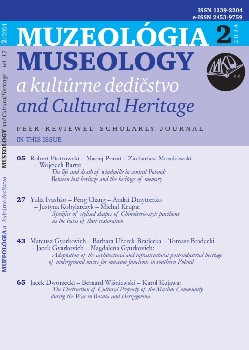Specifics of Stylised Shapes of Chinoiserie-style Pavilions as the Basis of their Restoration
Specifics of Stylised Shapes of Chinoiserie-style Pavilions as the Basis of their Restoration
Author(s): Yulia Ivashko, Peng Chang, Andrii Dmytrenko, Justyna Kobylarczyk, Michał KrupaSubject(s): Cultural history, Museology & Heritage Studies, Architecture
Published by: Univerzita Komenského v Bratislave, Filozofická fakulta
Keywords: Chinese pavilion; Chinoiserie; stylised forms; restoration;
Summary/Abstract: This article analyses the phenomenon of Chinoiserie style in European architecture. The basic principles of Chinese landscape design and the role of pavilions in the natural environment are highlighted. The fundamental difference between European and Chinese pavilions is shown at different levels – from the structure of the park to the composition to individual details – and it is also shown that European Chinoiserie-style pavilions were a much simplified and averaged version of the Chinese ones. The ambiguity of purpose and variety of functions inherent in ancient Chinese pavilions are lost in European ones, as the “Chinese-style” pavilion is intended for only one purpose – aesthetic entertainment. The appearance of the European pavilion, sometimes called a “tea pavilion”, does not follow that of ancient Chinese tea ceremony pavilions. In addition, the European park pavilions cannot be compared to the most famous Chinese “landscape pavilions”, as none of the former are located in such a majestic landscape with the possibility of viewing from a long distance.
Journal: Muzeológia a kultúrne dedičstvo
- Issue Year: 12/2024
- Issue No: 2
- Page Range: 27-41
- Page Count: 15
- Language: English

